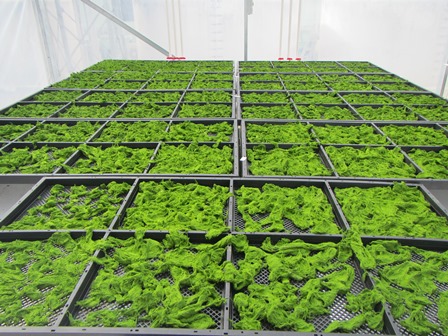
A native freshwater algae grown in northern Australia can be used to create a high-quality, renewable jet fuel, an international research team has found.
The multi-disciplinary team including researchers from BGU, James Cook University and the University of Sydney has developed a proof-of-concept process to create high quality renewable biofuel from the macroaglae, Oedogonium, ready for blending with regular gasoline, jet fuel and diesel. Results for their collaborative work have been published in the prestigious international journal Energy & Environmental Science.
Prof. Rocky de Nys from the Centre for Macroalgal Resources & Biotechnology (MACRO) at James Cook University led the group responsible for providing the project with the fresh water algae. He said the algae was grown under special conditions and tailor-made to fit the needs of the project.
“Oedogonium is a robust, non-invasive species that is highly productive and easily cultivated on a large scale using wastewater. This makes the macroaglae an attractive source of biomass for further processing to create renewable fuels and chemicals. Its cultivation is highly efficient relative to harvesting of land-based plants and also avoids conflict for agricultural resources that might be diverted from food production.”
Dr. Thomas Maschmeyer, Professor of Chemistry at the University of Sydney and joint leader of the research project worked with Prof. Brian Haynes from the University’s School of Chemical and Biomolecular Engineering to understand how to control the conversion of freshwater algae into a crude oil equivalent.
“A key problem associated with processing algae into liquid transportation fuel is the presence of nitrogen from algal proteins in the intermediate bio crude oil, as the nitrogen poisons downstream catalysts required for further upgrading,” said Maschmeyer, who is also the Director of the Australian Institute for Nanoscale Science and Technology.
“However the nitrogen content can, in fact, be controlled at multiple points in the production chain from biomass to high-grade fuel product,” he added.
Explaining the process Prof. Brian Haynes said: “In order to utilise a macroalgal species effectively, its production needed to be integrated into a chain that addressed the issues of waste nutrient, water and carbon recycling.
“The low nitrogen macroalgae are converted to bio-crude oil, which is combined with a synthetic fuel stream produced by catalytic conversion of waste CO2, resulting, after further processing, in a finished fuel blend.
“The process makes use of water at very high temperature and pressure to liquefy the algae and convert it into an energy-dense bio-crude oil.”
“Our research colleagues at Ben-Gurion University of the Negev used their expertise to take the bio-crude oil and refine it into a finished fuel product,” said Prof.
Prof. Moti Herskowitz, Director of BGU's Blechner Center for Industrial Catalysis and Process Development: "The Blechner Center has undertaken a bold and successful initiative, focusing on conversion of carbon dioxide to liquid fuels and chemicals. Researchers at the Center have developed novel, proprietary catalytic processes for converting CO2 to alternative, fungible liquid fuels and chemicals. This liquid was mixed with the bio-crude oil and further hydrotreated to yield liquid fuels."
The work was supported in Australia by the Science and Industry Endowment Fund, the Australian Renewable Energy Agency (ARENA); the Advanced Manufacturing CRC (AMCRC), and MBD Energy Ltd., Israel - Strategic Alternative Energy Foundation (I-SAEF), the I-CORE Program of the Planning and Budgeting Committee and The Israel Science Foundation.
